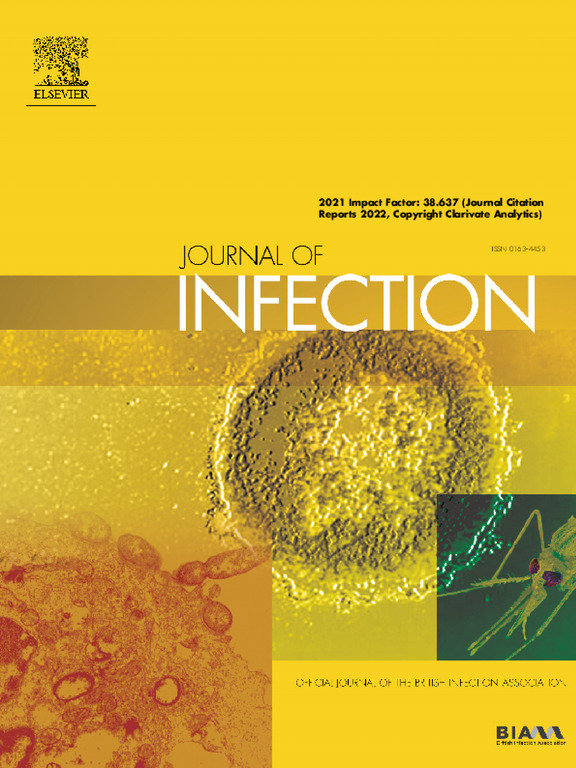一种可协助解释梅毒快速血浆反应素试验的人工智能工具:开发和现场评估。
IF 14.3
1区 医学
Q1 INFECTIOUS DISEASES
引用次数: 0
摘要
目的:快速血浆反应素(RPR)试验是诊断梅毒和评价治疗效果的传统方法,依赖于主观解释,技术熟练程度较高。本研究旨在开发和验证一个用户友好的人工智能(AI)解释工具。方法:利用276张RPR阴性样本和223张RPR阳性样本的600张RPR卡照片数据集进行模型开发。参考结果基于至少三分之二经验丰富的实验室人员的一致解释。然后利用深度学习算法开发了一个解释模型,并将其加载到智能手机中,在2023年10月至2024年4月期间在两个临床中心进行现场解释。结果:该模型对反应性圈的准确率为82.67% (95% CI为71.82% ~ 90.09%),对非反应性圈的准确率为84.44% (95% CI为69.94% ~ 93.01%)。在野外研究中,669份标本的敏感性为94.85% (95% CI 89.29% ~ 97.73%),特异性为91.56% (95% CI 88.78% ~ 93.71%),一致性为92.23% (95% CI 89.87% ~ 94.09%)。阳性预测值为71.4% (95% CI 66.86% ~ 8033%),阴性预测值为98.59% (95% CI 96.98% ~ 99.38%)。结论:该工具有助于RPR解释标准化,实现数据可追溯性,并对偏远和欠发达地区进行质量控制。本文章由计算机程序翻译,如有差异,请以英文原文为准。
An artificial intelligence tool that may assist with interpretation of rapid plasma reagin test for syphilis: Development and on-site evaluation
Objectives
The rapid plasma reagin (RPR) test, a traditional method for diagnosing syphilis and evaluating treatment efficacy, relies on subjective interpretation and requires high technical proficiency. This study aimed to develop and validate a user-friendly RPR-artificial intelligence (AI) interpretative tool.
Methods
A dataset comprising 600 images of photographed RPR cards from 276 negative and 223 positive RPR samples was used for model development. The reference result was based on consistent interpretations by at least two out of three experienced laboratory personnel. Then an interpretative model was developed using deep learning algorithms and loaded into smartphones for on-site interpretation at two clinical centers from October 2023 to April 2024.
Results
The model demonstrated an accuracy of 82·67% (95% CI 71·82%–90·09%) for reactive circles and 84·44% (95% CI 69·94%–93·01%) for non-reactive circles. In the field study, 669 specimens showed a sensitivity of 94·85% (95% CI 89·29%–97·73%), specificity of 91·56% (95% CI 88·78%–93·71%), and concordance of 92·23% (95% CI 89·87%–94·09%). The positive predictive value was 74·14% (95% CI 66·86%–80·33%) and negative predictive value was 98.59% (95% CI 96·98%–99·38%).
Conclusions
The tool assists in RPR interpretation standardization, enabling data traceability, and quality control for remote and underdeveloped areas.
求助全文
通过发布文献求助,成功后即可免费获取论文全文。
去求助
来源期刊

Journal of Infection
医学-传染病学
CiteScore
45.90
自引率
3.20%
发文量
475
审稿时长
16 days
期刊介绍:
The Journal of Infection publishes original papers on all aspects of infection - clinical, microbiological and epidemiological. The Journal seeks to bring together knowledge from all specialties involved in infection research and clinical practice, and present the best work in the ever-changing field of infection.
Each issue brings you Editorials that describe current or controversial topics of interest, high quality Reviews to keep you in touch with the latest developments in specific fields of interest, an Epidemiology section reporting studies in the hospital and the general community, and a lively correspondence section.
 求助内容:
求助内容: 应助结果提醒方式:
应助结果提醒方式:


